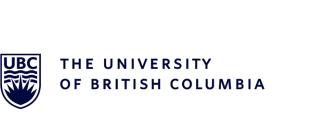Nonverbal Assessment of Pain Workshop
October 24, 2018, 9:00 am to 5:00 pm
Verbal self-report has historically been considered the gold standard of clinical assessments of pain, with some scholars suggesting that self-report is built in to the International Association for the Study of Pain (IASP) definition of pain. However, the IASP definition also notes that the “inability to communicate verbally does not negate the possibility that an individual is experiencing pain” and there are many populations who likely are experiencing pain but are unable to verbally report that pain. Very young infants, patients experiencing advanced dementia or other cognitive impairments, and nonhuman animals all can be incapable of verbally reporting pain, and all are the subject of intense scientific debates regarding the best methods for assessing pain. Researchers studying these different populations grapple with how to assess the presence and severity of pain, sometimes using similar assessment techniques (e.g. facial expressions, biomarkers, and caretaker assessments), but there has been limited interaction between the different groups of researchers. This workshop would bring together scholars working on different non-verbal populations to share findings and approaches.
Please register by emailing Stacey.Herzer@ubc.ca
|
9:00 - 9:30 |
Coffee and Welcome (Adam Shriver and Ken Craig |
|
9:30-10:15 |
Rebeccah Slater (Oxford): The measurement and treatment of pain in infants. |
|
10:15-11:00 |
Fiona Moultrie (Oxford): The development of pain perception in early life. |
|
11:00-11:45 |
Questions and Discussion (led by Ruth Grunau) |
|
11:45-12:45 |
Lunch |
|
12:45-1:30 |
David Edelman (Dartmouth): Assessment of Pain in Non-Human Animals: What Can It Tell Us About the Human Case? |
|
1:30-2:00 |
Questions and Discussion (led by Dan Weary and Adam Shriver) |
|
2:00-2:45 |
Frank Symons and Alyssa Merbler (U of Minnesota): Non-verbal approaches to assessing pain in people with neurodevelopmental disabilities. |
|
2:45-3:15 |
Questions and Discussion (led by Tim Oberlander) |
|
3:15 – 4:15 |
Discussion: Toward a multidisciplinary collaborative research agenda and proposals (led by Adam Shriver, Dan Weary and Ruth Grunau) |
|
4:15 - 4:30 |
Wrap up, thanks |


